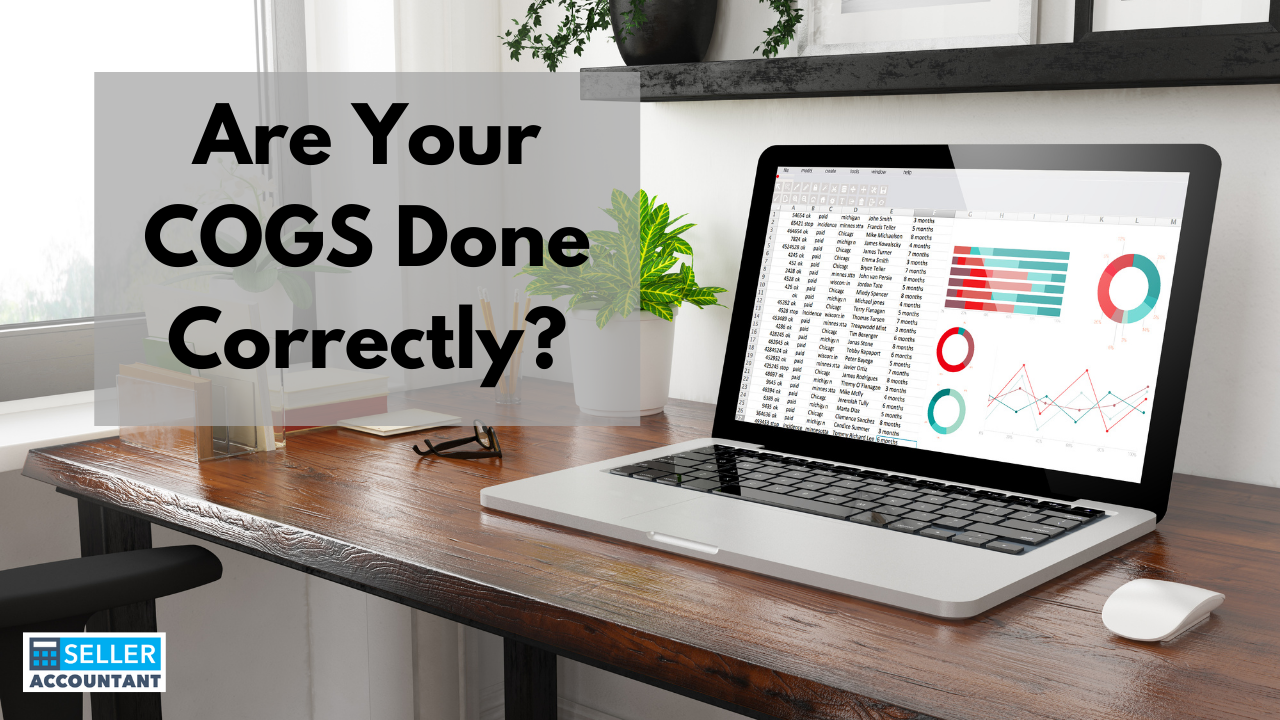If you’ve been following the Seller Accountant blog for a while, you know that we advocate for e-commerce sellers to use accrual accounting when doing their books. One of the biggest benefits of this system is that it allows for sellers to see whether their margins are staying consistent over time, but if something looks amiss, there’s one probable culprit: COGS. How do you know if your COGS are calculated correctly?
Red Flags
When you’ve put effort into your accrual accounting, it can go a long way towards highlighting mistakes on your P&L.
One of the most consistent pieces of data you’ll see month-to-month is your Cost of Goods Sold (COGS), a line that should more or less correlate to your overall profit margins. But if your margins look consistent while your COGS vary wildly between months, it’s a red flag that something is wrong with the way you calculate COGS.
While the specific culprit of the miscalculation – fees, shipping, Amazon costs – may be up for debate, they usually point to a bigger issue: something is being added into the books on a cash basis rather than an accrual basis. The easiest way to tell whether your COGS are stated correctly is by comparing your COGS percentage to your margins. Both should stay fairly consistent, only differing by a few points from month to month, but if one is stable while the other is all over the map, take it as a flashing neon sign that Something Is Wrong.
How to Fix Your COGS
Once you’ve noticed that your books are off, go back to the e-commerce cash cycle drawing board. The cycle of cash > purchasing assets > sales > cash is the best place to start when figuring out where things went awry, and here’s how it breaks down.
Cash – You start with some amount of capital, ready to purchase inventory.
Assets – You purchase inventory, and it becomes a line item (“Inventory”) in your accounting – don’t book it as an expense yet!
COGS – You sell products through your store and expense them in the month in which they’re sold as COGS.
Cash – You end up with (hopefully) more cash than you started with, now able to invest in new products or collect profits.
If somewhere along the way you realize you’ve started expensing your inventory incorrectly (in the month where it was purchased rather than sold, or as an expense instead of an inventory line item), you’ve effectively created a cash-based accounting problem.
COGS can get even more complicated when you include issues like purchased inventory that’s still in transit, accounts payable/making payments to your supply chain, and booking sales in the correct month – but don’t worry! Focus on tracking your inventory and how it affects your recorded sales to get yourself back into the accrual accounting groove.
Work With Us
If the thought of trying to right your own accounting mistakes seems daunting and you’re ready to put your accounting in expert hands, book a free 15-minute discovery call today.

